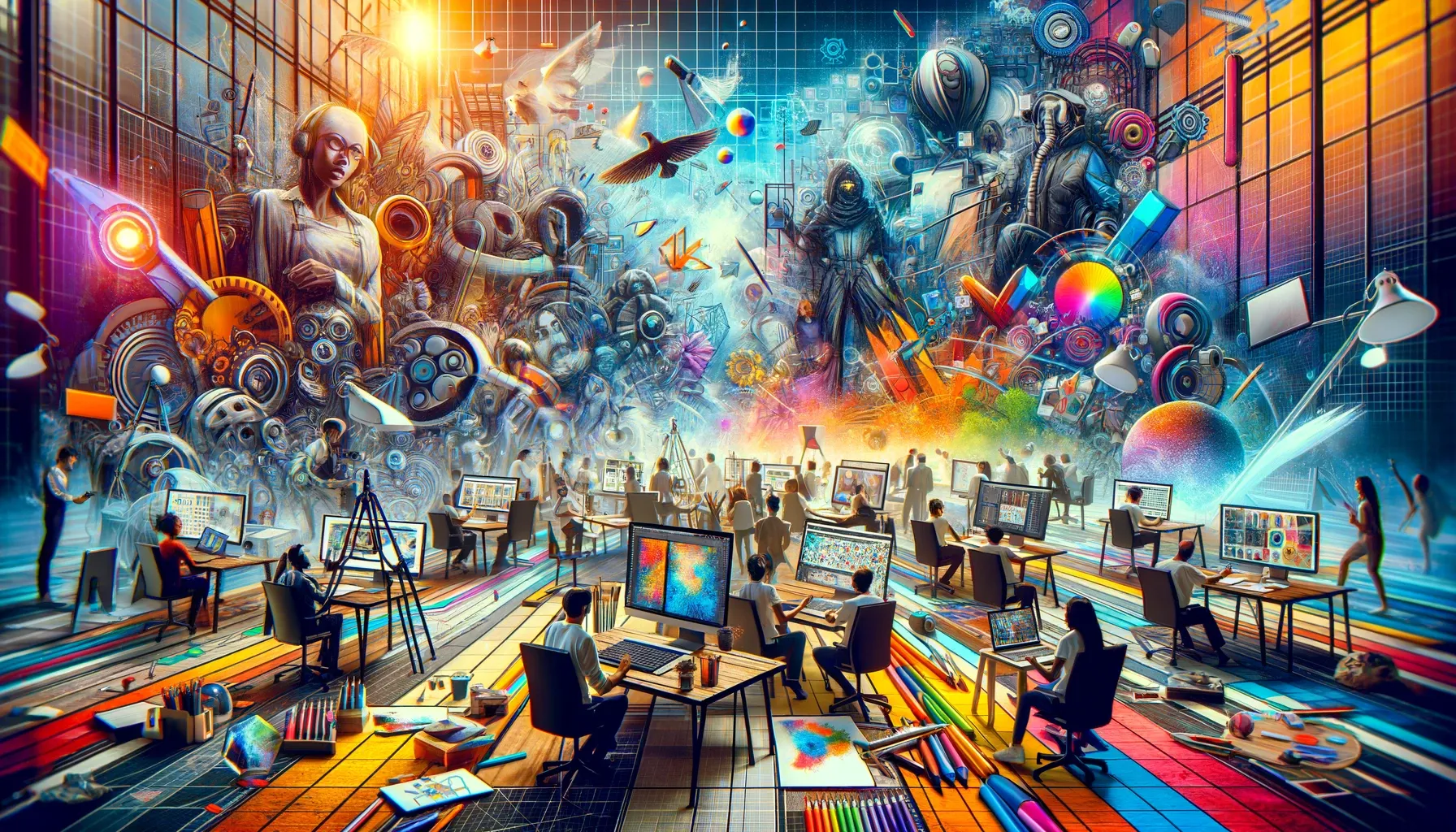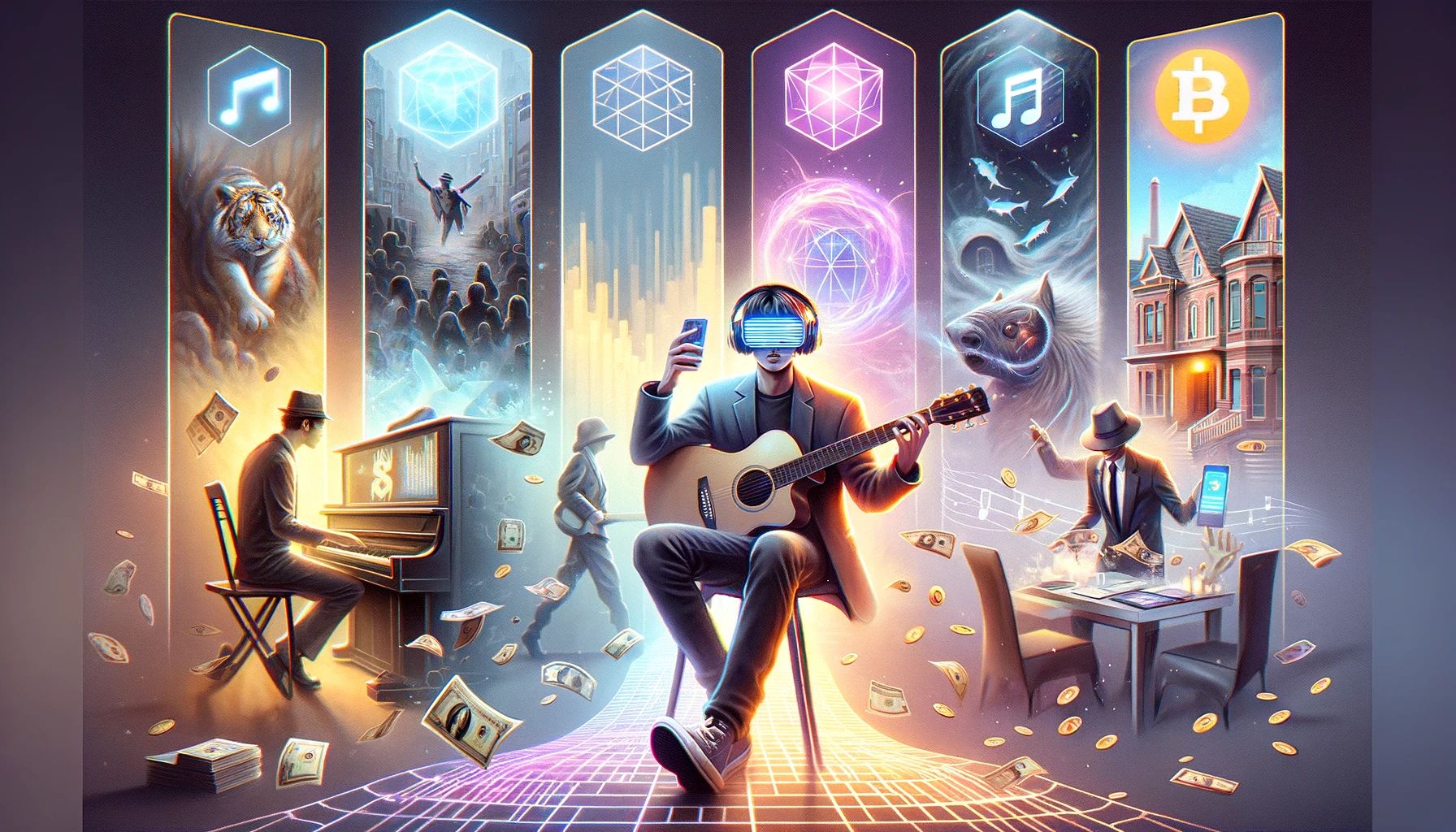NFT Market Activity — 8/1–8/30 [INFOGRAPHIC]
September 1, 2021 - 11 min read
NFT Market Activity from 8/1 - 8/30 with number of buyers, number of transactions, average cost per transaction and average spend per user. I review the data and give you tips on how to take advantage of being informed by the market trends.
![NFT Market Activity — 8/1–8/30 [INFOGRAPHIC]](http://images.ctfassets.net/3mnbejz4r6xh/3LP3UV1bNbuUylmG3xxgUM/96a0128bb15046a6bb0a9ddf13208a75/1_WxqnjmLewpCiqEabCXBxVg.png?w=694&h=508&q=50&fm=png)
Introduction
I’ve previously written about the size of the NFT market, but it has noticeably grown since the time of that post. Many people who are watching the NFT space are wondering if we are in a bubble and if the demand and volume of money coming into projects are sustainable.
In order to answer these questions and be better prepared to invest in NFTs, I’ve created an infographic that combines data from the Top 4 Ethereum NFT marketplaces according to Dappradar.com to understand how much people are spending on NFTs and whether or not the total sales volume can keep growing.
Let’s start with some high-level stats across these marketplaces from the past 30-days, ending on August 30th:
30-Day NFT Sales Volume: $3.04 billion (950,000 ETH)
30-Day NFT Transaction Volume: 2,183,480 transactions
Average NFT Transaction Value: $1,392 (.43 ETH)
Total Active Users Buying and Selling NFTs: 412,388
Average Spend on NFTs per User: $7,371 (2.3 ETH)
If the pace of the NFT market continues at the above rates, we will see $36.48 billion flow into NFTs in a 12-month period.
It’s plausible to think sales volume will increase, given that the number of active users is relatively small compared to global populations and income. In the US alone, it’s estimated that 30.7% of households have an income of $100,000 or more. With 128.45 million households total in the US, that leaves 39.43 million who earn $100,000 or more.
That means if we look at this market as the United States only, just 1.07% of households are spending money on NFTs. The reality is that NFTs are global and appeal to different collectibles markets.
This does not mean every single NFT project will increase in value — my prediction is that we’ll see consolidation to leading projects at various price-point tiers, leaving others to crash and go to zero.
Let’s take a deeper look at this data using the NFT market size infographic:

Source: Startwithnfts.com
You’ll notice that the global collectibles market is valued at $370 billion, which means at this current explosive pace, NFTs represent just 10% of that entire market.
During this post, I will keep reminding you over and over that the optimism for the growth of this market does not mean you should spend more money than you can afford to lose. Because we are early in the maturity of NFTs, this means that as new people enter, the projects that are desired could shift quickly. It also doesn’t mean that demand will keep up with the enormous supply of projects we are currently seeing.
4 Reasons Why I Believe the NFT Market Will Continue to Grow Significantly
(1) The spirit of the blockchain is to break down barriers between two people who wish to transact — in fact, the earliest art project on the Ethereum blockchain shared this same mission: to allow digital artists to get paid directly for their work.
Anyone in the world can transact an NFT and in many ways, it’s easier to do so than in other collectible markets. Because of this, I think NFTs will appeal to a larger global audience. My website has been viewed by readers in 26+ countries and that number is growing. This may invite even more supply and even distribution among projects, but I believe it’ll drive up the value of the market in total.
(2) NFTs are diverse and have elements that may appeal to multiple collectible markets: digital art, photography, sports cards, video games, and more
The Global Art Market is estimated at $50.06 billion in sales volume, but it’s not the only market NFTs could attract. It’s possible, and realistic, that the global distribution and appeal across multiple collectible markets drives the NFT market higher than the traditional art collectible market.
(3) It’s becoming more “normal” to invest in Cryptocurrency — there are certainly very intelligent naysayers who believe currencies like Bitcoin are in a speculative bubble, but Cryptocurrency has a seat at the table when it comes to investment discussions. Institutions like Visa have even begun acquiring NFT assets.
I believe more institutions will acquire blue-chip NFT assets, further validating the concept and bringing the NFT market attention.
(4) You can flex your assets to more people online than IRL (in real life) — people underestimate buying assets to “show-off” to an audience and assert a status in communities. There’s a psychology behind this and NFTs afford the opportunity to reach a global audience with these flexes.
We buy certain shoe brands, car brands, purse brands, jewelry brands, etc. because it’s connected to status. If we were driven by pure utility, there wouldn’t be people driving Audi and BMWs. We’d have simple vehicles to get us from point A to point B. Whether we like it or not, luxury goods have a place in society for this reason. I don’t underestimate status as a utility of NFTs.
Despite the positive signals, data, and sales volume for the NFT market, it is also likely that pockets of the market will crash. The decentralized nature of the market is a double-edged sword: it makes it easy for people to get in and transact NFTs, and it also makes it easy for project creators to launch new NFT projects.
As we’ve seen in other collectible bubbles, the “long-tail” of assets get hit the hardest. The rare, blue-chip assets emerge from bubbles and crashes even stronger.
It’s more than likely we will see the same effect in the NFT market, with consolidation toward quality projects that emerge from the sea of supply that has benefited from a rapid increase in demand.
Downsides to Consider When Evaluating The NFT Market
(1) There is a learning curve to get started buying and selling NFTs and it’s technical in nature
For a person to buy his / her first NFT, there are multiple steps required. It’s not as easy as creating an account, entering a credit card, and providing a shipping address. Users need to first purchase a cryptocurrency from an exchange (which can be held for a number of days), then create a non-custodial wallet like Metamask and get accustomed to transferring funds. It’s also critical for security reasons that a user purchase a hardware wallet, which even experienced buyers still haven’t done.
(2) Scalability is a concern with both cryptocurrencies and the infrastructure that supports NFT transactions
If new users get over the hurdles of getting set up to transact NFTs, they begin to learn that trading on Ethereum requires paying a gas fee to support the computing power needed to validate transactions. Sometimes, this can get extremely expensive (upwards of $1,000 during high-usage times). Currently, Ethereum can only handle 30 transactions per second. Newer cryptocurrencies like Solana are solving some of these scalability problems, and incumbents like Ethereum are hard at work to release a version 2 to solve this issue.
Opensea.io, the leading marketplace for NFT buying/selling (which accounts for 96% of the $3.04 billion sales volume) has just 38 employees and is trying to expand rapidly to support the new demand.
(3) Security concerns
If your metamask wallet is hacked and your ETH and tokens are stolen, there’s nothing you can do. You can’t call support. You could call the authorities, but the blockchain is anonymous and it is difficult to recoup any losses. There are measures you can take to protect yourself (like buying a hardware wallet) that all but completely eliminate these risks. This may turn people off from NFTs, but I anticipate that security of assets will become a larger focus and there will be new companies formed to help protect users from theft.
There isn’t any hard data yet on the % of active users who have had assets stolen, so we don’t know if this is more rampant than other types of fraud, but it is up to you and you alone to protect your assets.
(4) Technically savvy generations may be years away from having noticeable buying power
There are 72.26 million Millenials (born 1981–1996) and some surveys have reported that they are the most likely generation to purchase NFTs. By 2030, it’s projected that millennial income worldwide will grow beyond 4 trillion dollars. This should be seen as a positive, but many millennials didn’t grow up with technology the way that Gen Z (born 1997–2012) has.
Gen Z does have the buying power of about $143 billion, but it’s projected to grow to $33 trillion by 2030 and will hold 25% of global spend power by that time.
Gen Z is known as the “digital native” generation and will likely be the buying power catalyst to take NFTs even more mainstream than it is today.
How Can You Use This NFT Market Data to Your Advantage?
It’s better to be practically optimistic about NFTs than it is to assume everything will go up exponentially simply because we are early (and we are early).
The narrative in many Discord groups is that there are 51.8 million millionaires across the globe and this automatically means that their specific project will go so high in value that people can’t fathom what the returns will be.
If that’s your reason for buying into a project, take a pause, step back and think about the larger landscape.
Think about the category your project falls under — is it art, sports cards, utility, historical?
Then go deep.
Do research on buying behaviors of art (if that’s what you’re after) and study up on some art history.
Looking at photography?
Study the artist’s work, their critical acclaims, their back story. Before I bought into a project, I did exactly that and wrote an article up on the topic to be sure I was making the right decision.
If you’re into history, and historical projects, you could become an NFT archeologist. Yes, that’s a real thing.
In some ways, we are still very early, but projects have gotten more expensive and it’s more costly to make mistakes. It’s better to spend money you can afford to lose because if you do, you’ll like to be more patient with a project you develop some conviction behind.
These typically aren’t answers people like to hear. They would rather be told what to buy on Twitter, immediately ape in (buy heavily into) and expect an immediate return.
The simplest way to get an advantage with this data is to develop patience.
I’ve observed many people rushing to buy into a project because of a Twitter tip, only to discover a new one a week later that they have much more conviction for (myself included).
Demand is coming, but it’s likely going to be concentrated on fewer projects. Put yourself in the shoes of that millionaire, or that person who is just getting his/her feet wet in the NFT space.
You should always buy what you like, but chances are, you’ll want to buy something that will hold value in the longer term.
This is something that I admittedly struggle with. From the outside, it seems like some people pick projects that grow in value exponentially just days after they purchase, but it isn’t the reality.
Oftentimes, you’ll have to take the time to find the projects you like and think will hold long-term value, then you need to sit on them.
It’s difficult because as we all try to build ETH to chase bigger, more expensive projects or NFTs, we want quick returns. The good news is that NFT timelines move faster. While some projects are good holds for 4–5 years, you may find some that will be discovered within weeks and months.
My parting advice is to pay attention to the trends of the submarkets. As you’ll learn, most decent NFT projects go up value almost immediately in the secondary market after a project is minted.
Excitement and rising prices drive people to buy so they don’t “miss out”, but inevitably, it comes back down to earth. If you are looking to play on a shorter time frame to build up your ETH, it’s critical that you become an expert in these trends, and recognize that there’s even more risk to this strategy.
I’m very optimistic about NFTs and the growth of this market, but please remember to spend time doing the research (many successful people in this space research full-time) and do not spend more than you can afford to lose.
Newsletter
Enter your email address below to subscribe to my newsletter
latest posts





